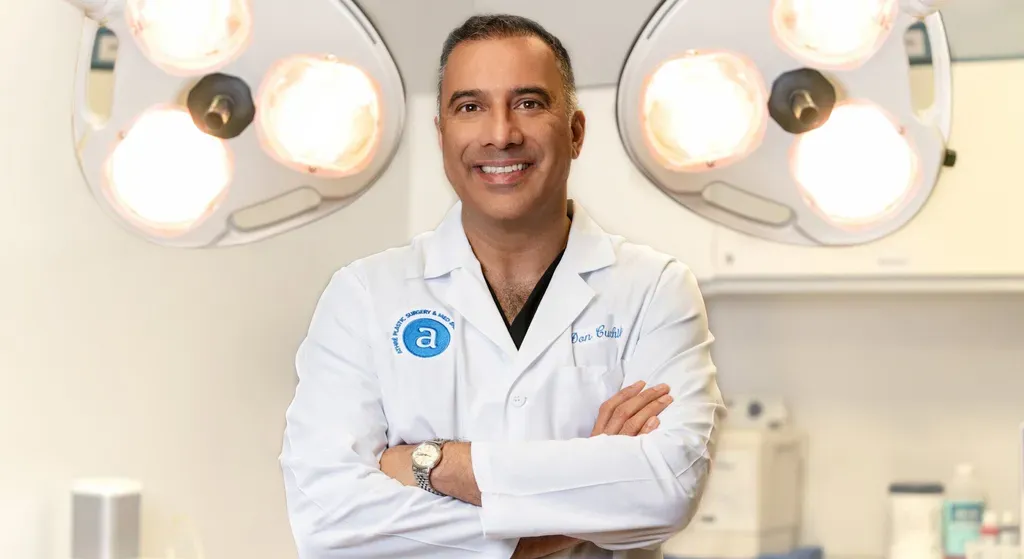

How Many Rhinoplasty Surgeries Can a Patient Have? Expert Insights
How many rhinoplasty surgeries can a patient have? There’s no definitive number, but risks and complexities increase with each procedure. Factors such as scar tissue and healing time are critical. This article guides you through what to expect with multiple rhinoplasty surgeries, from safety considerations to the importance of choosing an expert surgeon.
Key Takeaways
- Rhinoplasty includes primary and revision procedures, with revision rhinoplasty being more complex due to scar tissue and prior surgical alterations.
- Multiple rhinoplasty surgeries can be prompted by dissatisfaction with aesthetics or functionality, and it is critical to wait at least one year between procedures for optimal healing.
- Choosing a qualified, board-certified surgeon is essential for managing risks and achieving satisfactory outcomes in both primary and revision rhinoplasties.
Understanding Rhinoplasty and Revision Rhinoplasty
A nose job, clinically known as rhinoplasty, is a surgical operation aimed at reshaping the nose for cosmetic or functional improvements. This procedure entails altering the nasal bone and cartilage to achieve a preferred shape. Rhinoplasty encompasses various techniques like primary rhinoplasty and revision rhinoplasty, among others, tailored to meet individual needs.
The first-time surgical alteration of someone’s nose is called primary rhinoplasty. It typically involves shorter times to lift the soft tissue envelope around the nose. Conversely, revision rhinoplasties are meant for individuals who have previously undergone nose surgeries and seek amendments due to unsatisfactory results or complications from earlier operations. The complexity of these subsequent procedures increases because surgeons must navigate through scar tissue and modified structures within the previous surgery site.
Achieving pleasing outcomes in terms of aesthetics or functionality—or both—is central to undertaking a revisional approach on one’s nose with an emphasis on enhancing facial symmetry while potentially boosting self-image significantly. Reasons that lead patients toward additional corrective interventions may include dissatisfaction with prior workmanship or challenges such as obstructed airways post-surgery.
In either case—whether approaching your initial encounter under the knife or pursuing alterations via multiple interventions—a board-certified facial plastic surgeon should be sought after for their proficiency in handling intricate aspects associated with nasal reconstructive efforts, thus assuring favorable end results following each episode requiring operational interference regarding personal enhancement strategies vis-à-vis your problem.
Reasons for Multiple Rhinoplasty Surgeries
Numerous people undergo revision rhinoplasty when they are not satisfied with the outcome of their initial surgery. Challenges such as a twisted nasal tip, weakened support in the nasal septum, or problems with breathing may lead them to consider operations. Aesthetic issues regarding the nose’s look can drive individuals toward having multiple rhinoplasty surgeries.
Patients might also pursue revision rhinoplasty due to functional complications like trouble breathing because of improper healing after surgery or underlying structural defects that disrupt daily life. This type of surgery addresses both the visual and practical elements involved in achieving a well-balanced nasal structure.
In cases where new trauma affects the nose following an original procedure, additional rhinoplasty surgeries could be required for repairs. Subsequent accidents or injuries have potential ramifications on the integrity of one’s nasal form, which may require surgical rectification. Understanding these various motivations behind seeking multiple revisions is crucial for forming educated choices about treatment while fostering realistic expectations concerning outcomes.
Safety and Risks of Multiple Rhinoplasty Surgeries
Subjecting oneself to numerous rhinoplasty surgeries can elevate the potential for complications and challenges. These operations, typically safe, become substantially more complex compared to first-time surgeries due to elements like the development of scar tissue and modifications in nasal anatomy. The formation of such scar tissue is a standard aspect of recovery. It may present obstacles during subsequent revision procedures by impacting both visual appeal and functional capability.
Revision surgeries are often pursued by patients who need to rectify issues that emerged from earlier surgical interventions. Problems with breathing stemming from initial rhinoplasties might necessitate additional surgery aimed at providing structural reinforcement or corrective measures. In cases where damage has been inflicted on cartilage during the original procedure, an ensuing secondary operation—potentially addressing concerns like nasal septal perforation—may be required.
Selecting a rhinoplasty surgeon who boasts substantial experience is crucial for reducing these risks. A practitioner skilled in facial plastic surgery possesses the knowledge necessary to adeptly manage multiple rhinoplasty operations so that individuals receive optimal results from their treatments. Understanding safety considerations and associated hazards empowers patients with valuable insight, allowing them to proceed toward surgery assuredly.
Summary
To summarize, the path to attaining one’s ideal nose through numerous rhinoplasty surgeries is intricate yet frequently essential. It’s vital for individuals to grasp the fundamentals of initial and subsequent revision rhinoplasties, comprehend why multiple procedures might be required, and appreciate the significance of adequate recovery periods to ensure favorable results. Opting for a seasoned rhinoplasty surgeon and harboring realistic anticipations are equally critical elements in successfully traversing this process.
In essence, securing gratifying outcomes hinges on patience, effective dialogue with your surgeon, and an in-depth comprehension of the intricacies associated with undertaking several rhinoplasty operations. When patients employ a methodical strategy paired with professional advice from their chosen practitioner, they can attain the sought-after balance and functionality within their nasal architecture.

